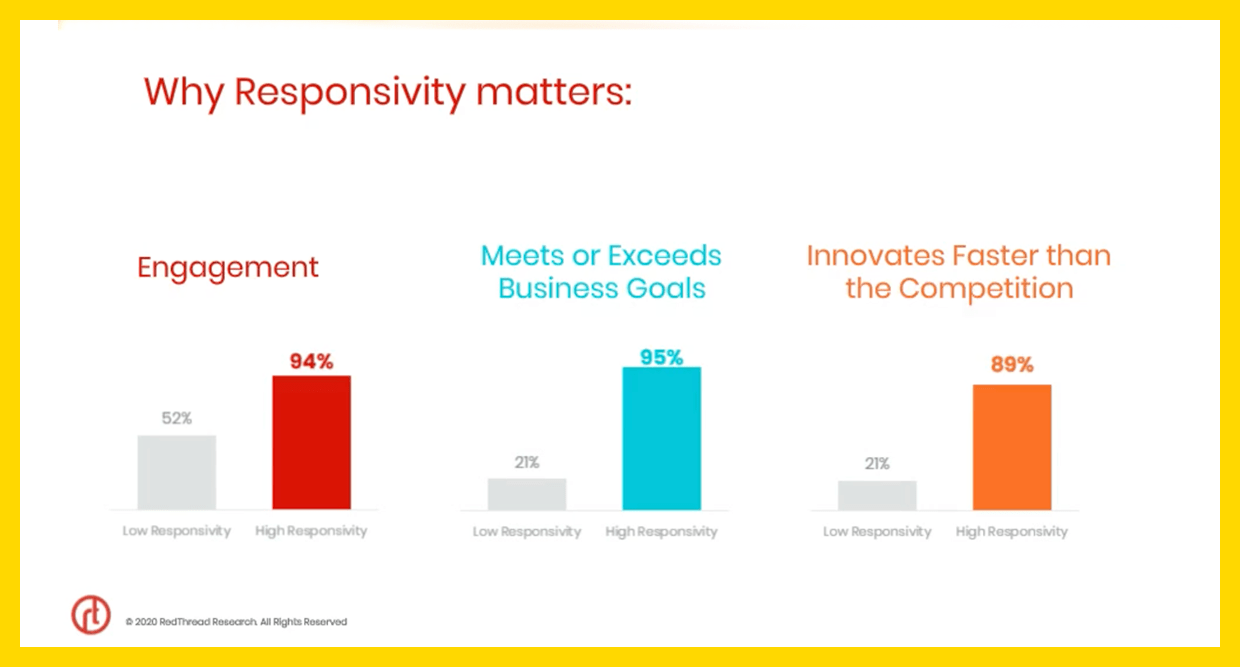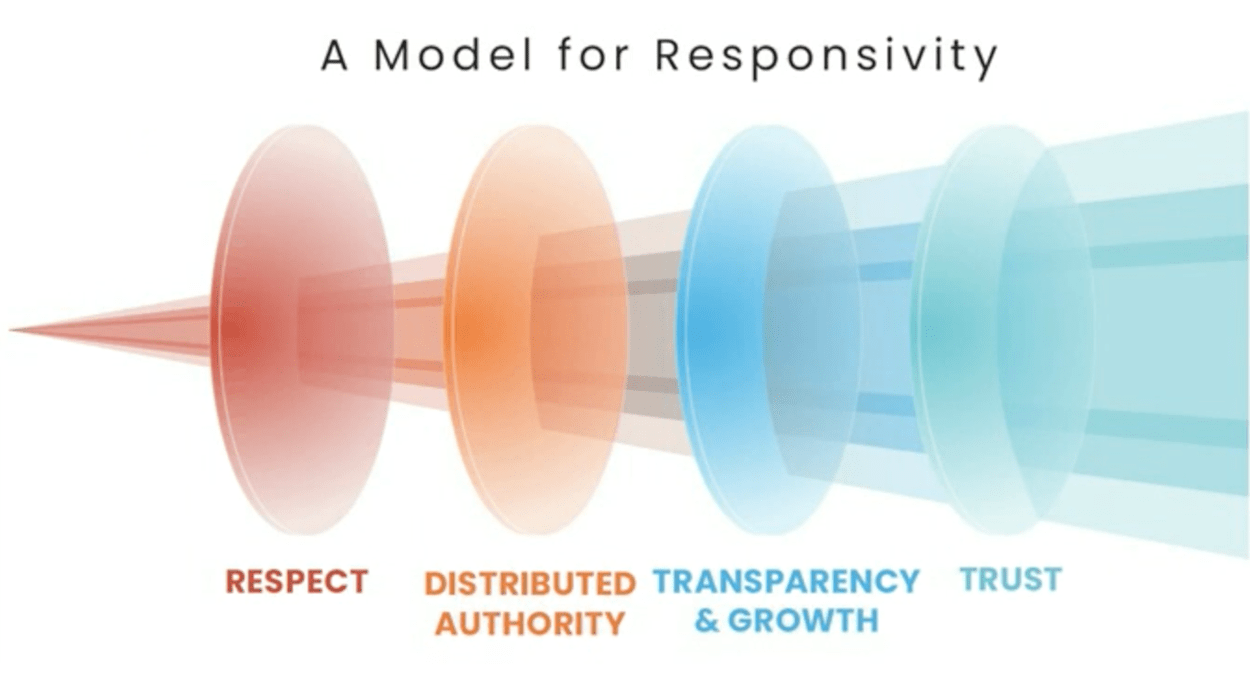Why Responsivity is the Key for Organizations to Survive in Times of Crisis

Dani Johnson, Co-founder, Principal Analyst of RedThread Research, and her partner know what it takes for organizations to not only survive but to thrive during times of crisis. They study the behaviors, processes, learning, and organizational structure as they relate to people performance. While the global pandemic has certainly disrupted the usual business practices of most organizations, Dani says through her recent research she’s seen that some have been able to respond better than others. And the key difference she notes is responsivity.
What is responsivity?
Responsivity differs from agility in that the organization doesn’t just respond to what’s happening externally, but it also turns what’s happening into an advantage. Dani sees responsivity becoming the main goal of organizations going forward in a post-pandemic world. Organizations that exemplify this are GM, Netflix, Amazon, and Target. They have been able to consistently pivot based on external influences and keep ahead of customer demands.
And from her recent research, Dani points to key characteristics that these organizations exhibit in enabling responsivity:
The first characteristic is a decentralized structure where not all decisions are made at the top. These organizations are also team-based and tend to be able to ebb and flow with the needs of the organizations which makes it easier to respond to external forces. The other characteristics of an organization with high responsivity include continuous development of their people, open communication, dispersed decision-making, and use of tools to help everyone work together.

Why does responsivity matter?
Dani discovered that organizations with high responsivity demonstrated high levels of employee engagement (94% compared to 52% of those that did not have high responsivity). The second area of note is reaching business goals. Ninety-five percent of organizations with high responsivity said that they met or exceeded business goals whereas only 21% of those low in responsivity reported meeting business goals. The third area is innovation. Eighty-nine of high responsivity organizations said that they can innovate faster than the competition but only 21% of organizations with low responsivity said they can do the same.

How can your organization develop responsivity?
Responsivity matters. So the next question is how can you develop it in your organization? Again, pointing to her recent research, Dani sees four lenses that you can use to apply to your people and processes to build responsivity:
The first lens is Respect. Without respect for your people, their skills, and their ideas, it’s virtually impossible to look through the other lenses you need to enable responsivity. As we’ve seen with the pandemic, people need to feel safe in order to give their best at work. They also need to feel safe enough to share their ideas, try new things, and to fail without getting fired. Managers need to stop micromanaging people and allow them to do their day-to-day jobs without hovering. And organizations need to encourage feedback from employees so information is not just flowing down from the top but also bubbling up from the bottom.
The next lens is Distributed Authority where organizations empower employees to make decisions that affect their work. The key here is to not allow a free-for-all but to make it clear what rights employees have to make decisions within their roles. Dani says that organizations with diversity often make more informed decisions by bringing in different viewpoints. Also, organizations with distributed authority collaborate cross-functionally more, which in turn reduces siloed decisions.
Transparency and Growth are other key lenses organizations with high responsivity apply to their people and processes. These organizations develop a culture of information-sharing and continuous growth. Managers are clear with employees on performance, have consistent conversations, and provide employees with the data they need on areas for growth. Learning and development (L&D) equip employees with the resources and content they need at the moment rather than pushing out static content based on L&D theories. Leadership also provides a vision and removes barriers so people can do their jobs.
Finally, Trust is the last lens. High responsivity organizations have a community mindset ensuring two-way communication, appreciation for employees’ contributions, and encouraging people to learn from their mistakes. One area of trust that Dani sees more organizations embrace is handling failure. More high responsivity organizations use failure as data they can use to improve. These organizations have a sense of “we are all in this together,” and this is supported by their systems and processes.
The key takeaway is high responsivity is not only good for the people but also for the organization. And those that embrace the enablers to build high responsivity will be doing much better when crises arise in the future.
For more in-depth information on responsivity, watch the on-demand webinar: Responsivity: Agility with Purpose fearing Dani Johnson.
